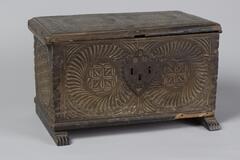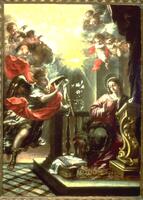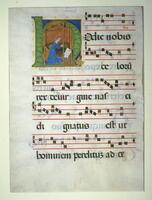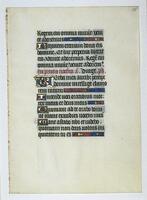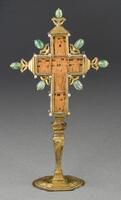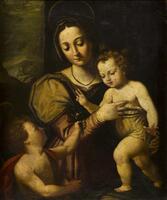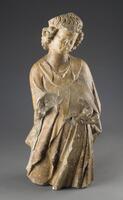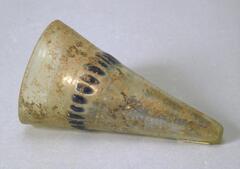5 Items in this Learning Collection
Collection Object
Collection Object
Collection Object
Collection Object
Collection Object
Copyright
All Rights Reserved
()
Busts of Saints Jerome and Gregory
Accession Number
1958/1.59
Title
Busts of Saints Jerome and Gregory
Artist(s)
Atelier of J
Object Creation Date
circa1500
Medium & Support
lindenwood with polychromy
Dimensions
19 7/8 x 19 5/16 x 7 7/8 in. (50.4 x 49 x 20 cm);19 15/16 x 19 5/16 x 7 7/8 in. (50.5 x 49 x 20 cm)
Credit Line
Museum Purchase
Label copy
March 28, 2009
The striking naturalism and powerful characterization of these busts endow them with a palpable presence, almost as if one stood before the saints themselves. Saint Jerome (about 340–420), who wrote the authoritative Latin translation of the Bible, is depicted as an introspective youth with a miniature lion—more charming than fierce—perched on his shoulder. At his side, the influential pope Gregory I (about 540–604) holds an open book and wears a papal tiara on his careworn brow. The pair of saints came from a large, spectacular altarpiece outfitted with doors and brimming with sculpture. Within this complex ensemble, Jerome and Gregory leaned out from the horizontal base of the altarpiece, known as a predella or Sarg, alongside similar busts of the sainted bishops Ambrose and Augustine. Together the four saints were known as the Doctors of the Church, since their writings provided a foundation for Christian theology and dogma in Western Europe.
The realism of such images made them potentially dangerous in the eyes of religious reformers. Ulrich Zwingli (1484–1531), the zealous leader of the Reformation in Switzerland, decried the naturalism of religious art as a potential temptation to sin: “There stands a [Saint] Sebastian, a [Saint] Maurice and the gentle John the Evangelist, so cavalier, soldier-like and pimpish that the women have had to make confession about them.” Similar convictions led to the widespread destruction of religious imagery throughout German-speaking lands during the Reformation, which may explain why this engaging pair of saints is all that remains of what must have once been a much larger altarpiece.
Subject matter
This pair of bust-length figures represents an aged Saint Gregory the Great crowned with a papal tiara and a younger Saint Jerome with a miniature lion, his usual attribute, resting on his shoulder. Due to the fundamental importance of their writings in Catholicism they came to be known as Doctors of the Church, and these two busts probably appeared alongside busts of the other two doctors, Saints Ambrose and Augustine, in the base of an elaborate carved altarpiece.
Physical Description
This pair of finely carved bust-length figures depicts two men in ecclesiastical garb. On the right appears an older figure who wears elaborate vestments and a papal tiara with a book in his left hand. His deeply lined and wrinkled face conveys a patient wisdom and authority as he stares directly ahead. His more youthful companion, dressed in a simpler collared robe and brimless cap, glances introspectively aside. He grasps an unfurled scroll in his left hand and a diminutive lion stares out from its perch on his left shoulder.
Primary Object Classification
Sculpture
Primary Object Type
carving
Additional Object Classification(s)
Ritual Object
Collection Area
Western
Rights
If you are interested in using an image for a publication, please visit http://umma.umich.edu/request-image for more information and to fill out the online Image Rights and Reproductions Request Form.
Keywords
Christianity
altarpieces
books
popes
scrolls (information artifacts)
1958/1.59
Title
Busts of Saints Jerome and Gregory
Artist(s)
Atelier of J
Object Creation Date
circa1500
Medium & Support
lindenwood with polychromy
Dimensions
19 7/8 x 19 5/16 x 7 7/8 in. (50.4 x 49 x 20 cm);19 15/16 x 19 5/16 x 7 7/8 in. (50.5 x 49 x 20 cm)
Credit Line
Museum Purchase
Label copy
March 28, 2009
The striking naturalism and powerful characterization of these busts endow them with a palpable presence, almost as if one stood before the saints themselves. Saint Jerome (about 340–420), who wrote the authoritative Latin translation of the Bible, is depicted as an introspective youth with a miniature lion—more charming than fierce—perched on his shoulder. At his side, the influential pope Gregory I (about 540–604) holds an open book and wears a papal tiara on his careworn brow. The pair of saints came from a large, spectacular altarpiece outfitted with doors and brimming with sculpture. Within this complex ensemble, Jerome and Gregory leaned out from the horizontal base of the altarpiece, known as a predella or Sarg, alongside similar busts of the sainted bishops Ambrose and Augustine. Together the four saints were known as the Doctors of the Church, since their writings provided a foundation for Christian theology and dogma in Western Europe.
The realism of such images made them potentially dangerous in the eyes of religious reformers. Ulrich Zwingli (1484–1531), the zealous leader of the Reformation in Switzerland, decried the naturalism of religious art as a potential temptation to sin: “There stands a [Saint] Sebastian, a [Saint] Maurice and the gentle John the Evangelist, so cavalier, soldier-like and pimpish that the women have had to make confession about them.” Similar convictions led to the widespread destruction of religious imagery throughout German-speaking lands during the Reformation, which may explain why this engaging pair of saints is all that remains of what must have once been a much larger altarpiece.
Subject matter
This pair of bust-length figures represents an aged Saint Gregory the Great crowned with a papal tiara and a younger Saint Jerome with a miniature lion, his usual attribute, resting on his shoulder. Due to the fundamental importance of their writings in Catholicism they came to be known as Doctors of the Church, and these two busts probably appeared alongside busts of the other two doctors, Saints Ambrose and Augustine, in the base of an elaborate carved altarpiece.
Physical Description
This pair of finely carved bust-length figures depicts two men in ecclesiastical garb. On the right appears an older figure who wears elaborate vestments and a papal tiara with a book in his left hand. His deeply lined and wrinkled face conveys a patient wisdom and authority as he stares directly ahead. His more youthful companion, dressed in a simpler collared robe and brimless cap, glances introspectively aside. He grasps an unfurled scroll in his left hand and a diminutive lion stares out from its perch on his left shoulder.
Primary Object Classification
Sculpture
Primary Object Type
carving
Additional Object Classification(s)
Ritual Object
Collection Area
Western
Rights
If you are interested in using an image for a publication, please visit http://umma.umich.edu/request-image for more information and to fill out the online Image Rights and Reproductions Request Form.
Keywords
Christianity
altarpieces
books
popes
scrolls (information artifacts)
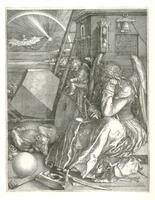

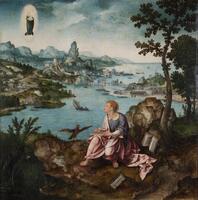
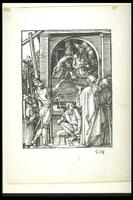
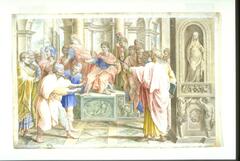
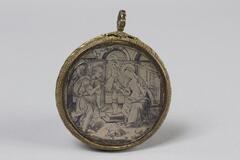
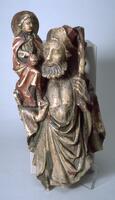
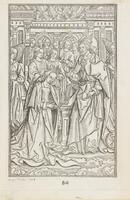
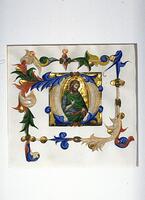
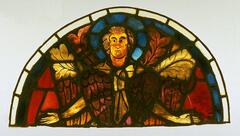

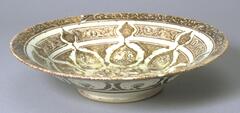
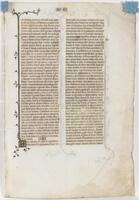
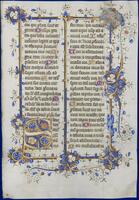

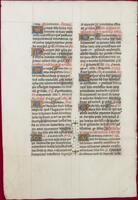
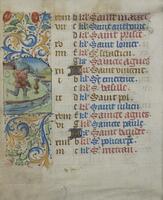
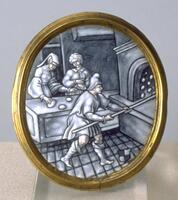
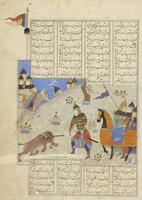
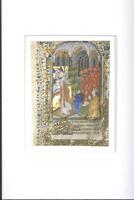


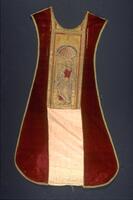

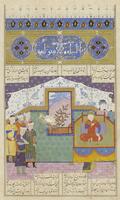

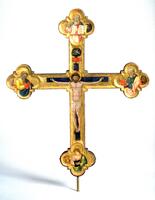
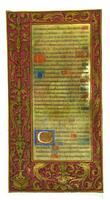
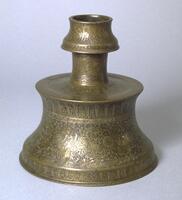
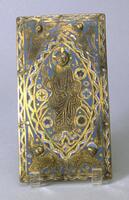
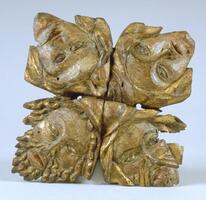
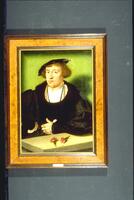
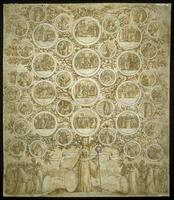
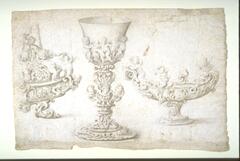
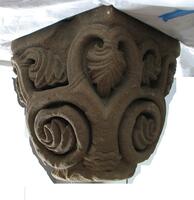
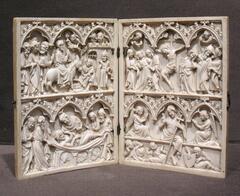
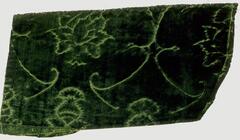
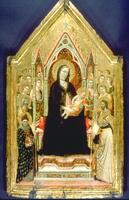
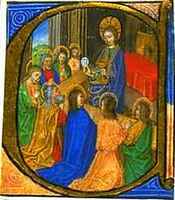



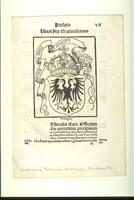

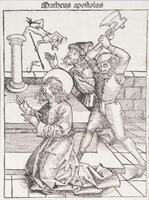
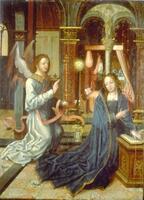
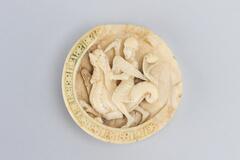


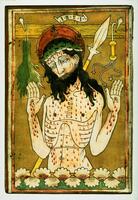
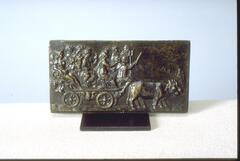
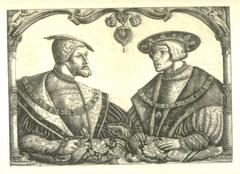
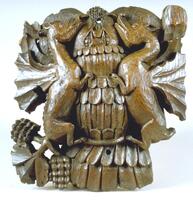
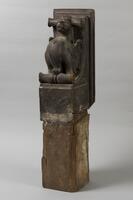
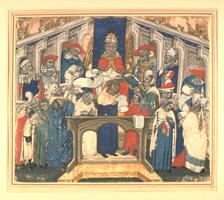
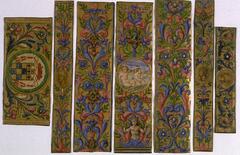
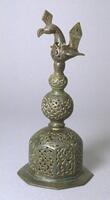
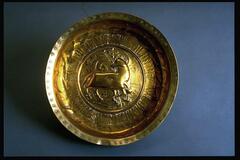

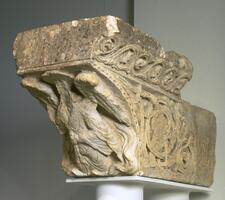
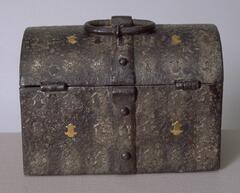
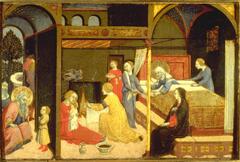

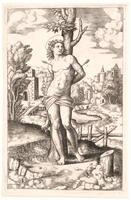
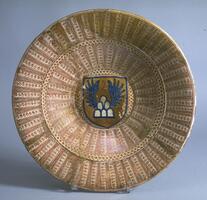
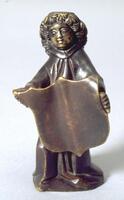


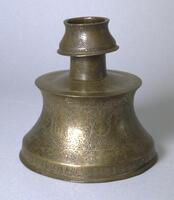
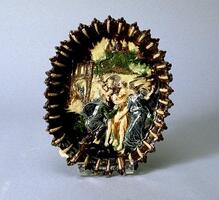
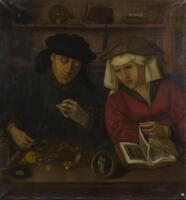
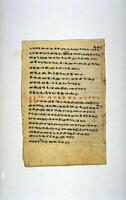

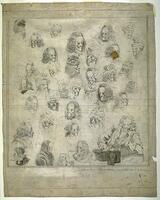
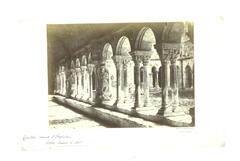
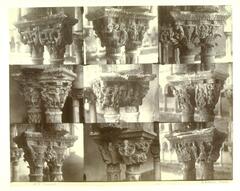

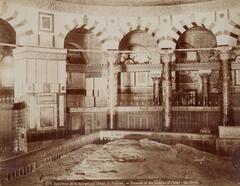
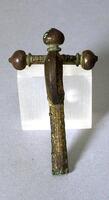
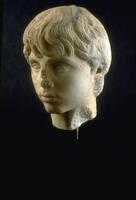


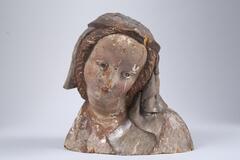
![This rectangular panel depicts four sacred figures rendered in dark hues with passages of vibrant red against a gold background. The upper edge of the gilded frame bears the prayer known as the "Hail Mary" ("Ave Maria Gratia Plena Domin[us tecum]"). This rectangular panel depicts four sacred figures rendered in dark hues with passages of vibrant red against a gold background. The upper edge of the gilded frame bears the prayer known as the "Hail Mary" ("Ave Maria Gratia Plena Domin[us tecum]").](/media/W1siZiIsIjIwMjIvMDUvMjUvMzZ5bWpwaTBuNl9kZWZhdWx0LmpwZyJdLFsicCIsInRodW1iIiwiMjQweDIwMCJdXQ?sha=182c62b7143d052b)

